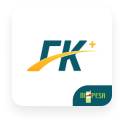Pharmaceutical packaging plays a crucial role in ensuring product safety, providing accurate information, and maintaining product integrity. One of the most critical aspects of pharmaceutical packaging is the printing precision, which ensures that the labeling, expiration dates, and dosage information are clear and correct. Flexo printing technology, known for its high-quality and versatile printing capabilities, has become a preferred choice for pharmaceutical packaging. This article will explore how Flexo printing machines meet the stringent precision requirements of pharmaceutical packaging, ensuring both high-quality prints and compliance with industry standards.
The Importance of Printing Precision in Pharmaceutical Packaging
Pharmaceutical products require strict packaging standards due to their sensitivity and the need to provide accurate information. Labels and packaging materials must be printed with high precision to avoid miscommunication, prevent misuse, and ensure the safety of consumers. Errors in printed details, such as incorrect dosage instructions, expiration dates, or safety warnings, can lead to serious health consequences, including poisoning or ineffective treatment.
Pharmaceutical packaging not only provides critical information but also serves as a barrier to protect the product from external factors such as light, moisture, and air. The printing process needs to ensure that both the packaging material and the printed information are of the highest quality to protect the product and maintain the integrity of the information provided.
Flexo Printing: A Brief Overview
Flexo printing, also known as flexographic printing, is a modern form of rotary printing that uses flexible photopolymer plates to transfer ink onto various substrates, including plastic films, paper, and cardboard. This method allows for high-speed printing on large volumes of materials, making it ideal for industries that require consistent, large-scale production, such as pharmaceuticals.
Flexo printing machines offer several advantages in pharmaceutical packaging, such as excellent print quality, the ability to print on diverse substrates, and high production speeds. The technology has evolved to meet the precise demands of the pharmaceutical industry, ensuring that packaging meets regulatory standards while maintaining the integrity of the product information.
How Flexo Printing Machines Ensure Printing Precision
1. Advanced Plate Technology
The quality of the print in flexo printing is highly dependent on the printing plate. Flexo machines use photopolymer plates, which are precise and can reproduce fine details with great accuracy. These plates can be engraved to produce intricate designs, including small fonts, logos, and other detailed elements commonly found on pharmaceutical packaging. With advanced plate technology, flexo printing machines can produce prints with sharp lines, fine details, and minimal distortion, ensuring the text and graphics on pharmaceutical packaging are clear and legible.
2. High Registration Accuracy
Flexo printing requires precise alignment of the printing plates and substrates. The machine uses an advanced registration system to ensure that each color is printed accurately in its intended position. This precision is critical in pharmaceutical packaging, where color-coded labels and markings are often used to distinguish between different products, dosages, and expiration dates. Any misalignment can lead to confusion or misidentification of products, which could have severe consequences.
To ensure high registration accuracy, modern flexo printing machines are equipped with optical sensors and automated registration systems that constantly monitor and adjust the alignment during the printing process. This ensures that the final printed output remains accurate and consistent.
3. Consistent Ink Transfer and Quality
In pharmaceutical packaging, ink consistency is essential for ensuring that all printed information remains clear and easy to read. Flexo printing machines use anilox rollers to transfer ink onto the printing plates. These rollers are designed to provide a uniform and controlled ink transfer, which helps maintain consistent print quality.
Furthermore, flexo printing machines can be equipped with ink metering systems that precisely control the ink flow to avoid over-inking or under-inking. This ensures that each print job delivers high-quality, legible results, even on intricate and small-sized fonts commonly used in pharmaceutical packaging.
4. High-Speed, Low-Temperature Printing
Flexo printing machines operate at high speeds, allowing for rapid production of large volumes of packaging materials. While speed is important in the pharmaceutical industry, it is equally essential to maintain print quality and precision. Flexo printing machines can achieve this balance by using low-temperature curing systems, which ensure that the ink dries quickly without compromising print quality.
The ability to print at high speeds while maintaining accuracy makes flexo printing machines ideal for meeting the time-sensitive demands of the pharmaceutical industry, where packaging production schedules are often tight.
5. Flexibility with Substrates
Pharmaceutical packaging requires a variety of substrates, such as plastic films, paperboard, and foils, each of which has unique printing requirements. Flexo printing machines are highly versatile and can print on a wide range of materials without compromising print quality. This flexibility is crucial for pharmaceutical companies that need to ensure that their packaging meets regulatory standards while offering protection and durability to their products.
Flexo printing also accommodates complex substrate structures, such as multi-layered films and packaging with coatings or laminates. The ability to print accurately on such materials ensures that pharmaceutical packaging maintains its quality and protective properties.
6. Compliance with Regulatory Standards
In the pharmaceutical industry, packaging is subject to stringent regulations regarding label content, font size, and printing legibility. Flexo printing machines are capable of producing prints that meet these regulatory standards, ensuring that the pharmaceutical company remains compliant with industry rules.
Additionally, flexo printing technology allows for the inclusion of various security features, such as UV ink, holograms, and microtext, which help protect against counterfeiting and ensure that the pharmaceutical packaging is tamper-evident.
Conclusion: The Role of Flexo Printing in Pharmaceutical Packaging Precision
Flexo printing technology plays a vital role in meeting the precision requirements of pharmaceutical packaging. Through advanced plate technology, high registration accuracy, consistent ink transfer, and the ability to print on diverse substrates, flexo printing machines provide a reliable and efficient solution for the pharmaceutical industry. By ensuring that the packaging is clear, accurate, and compliant with regulatory standards, flexo printing contributes to the safety, integrity, and effectiveness of pharmaceutical products. As the pharmaceutical industry continues to evolve, flexo printing machines will remain an essential tool in ensuring that packaging precision meets the highest standards.





